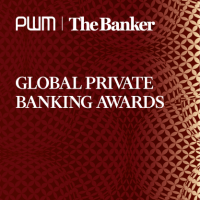External assets central to Generali’s expansion drive

Santo Borsellino, Generali Investments
Generali Investments’ chief executive Santo Borsellino made growing the Italian firm’s third party business a “key priority” when he took control in 2013. So far the decision has paid off
The rebranding of Generali Investments from Generali Investments Europe, the firm created from the union of its three asset management poles in Italy, Germany and France in 2012, is more than just a cosmetic exercise. It is part of a wider drive to leverage the investment expertise of Italy’s largest insurer’s asset management arm, set to strengthen its business to serve third parties, targeting in particular wealth management platforms and institutional investors, while expanding internationally.
With €445bn ($504bn) in assets under management, largely run on behalf of the group’s insurance arm, Generali Investments is the biggest asset management firm in Italy, and ranks among the top 10 fund houses in Europe.
In the recent past of its long history, dating back to 1831, assets managed for external institutional investors came in more as a reaction to clients’ requests than as a result of proactive marketing efforts. The fundamental shift occurred when Santo Borsellino became chief executive in 2013, making “a strong case” for why growing the third party business should be a “key strategic priority”.
The firm has set itself the three-year target of adding net inflows of €8bn to the €17bn assets it currently manages on behalf of third parties, says Mr Borsellino. Half of the growth is anticipated to come from private wealth managers, which today represent 5 to 10 per cent of total external assets. The growing convergence in the buying behaviour and due diligence practices of institutional investors and private banks is expected to enable the firm to leverage its approach with “sophisticated private banking shops”.
A “very cost efficient structure”, achieved due to scale and culture, enables the firm to safeguard profitability in challenging conditions, he says.
“If you do asset management properly, with a certain strategic intent, and without entering into unnecessary expenses, the business is quite profitable. This is the strongest call for growing our third party business,” states Mr Borsellino, who joined the company in 2008 as head of equities.
Before entering the fray of third party distribution, the firm conducted a deep auto-analysis of its strengths and weaknesses, which led to the redesigning of its product range, the strengthening of its service offering and reporting capabilities, as well as the creation of new product development processes.
“Starting to serve third party clients has been quite a challenge for us,” acknowledges Mr Borsellino, referring to the need to adapt to external clients’ standards and requirements.
So far, efforts seem to have paid off. Third party assets grew 16 per cent in 2015, with a significant proportion coming from outside the core markets of Italy, France and Germany. “Within our assets under management, the third party business is growing much faster than insurance-driven assets,” boasts Mr Borsellino.
The plans for international expansion imply “consolidating roots” in the three core markets, but also diversifying the scope of third-party business, which today is largely institutional.
€17bn
Of Generali Investments’ €17bn ($19bn) in third party assets today, slightly more than 40 per cent are sourced from Italy, around 50 per cent split between France and Germany and the remaining 10 per cent from other European countries
While the firm is committed to growing the group’s unit linked solutions, offering personalised, embedded-advice products, it prefers private banking rather than to target third-party retail/ IFA businesses, which in Italy is seen as “mature, overcrowded and expensive”.
To support its ambitions, the firm is pushing ahead with international geographic expansion. Generali Investments operates from Trieste, Milan and Rome in Italy, Cologne in German, and Paris in France, with the majority of the investment activity carried out from the French capital.
The opening of a London marketing office is the first step of a growth plan which will also include presence in the Nordics. Expansion in these countries is necessary to be seen as “serious” in the institutional asset management space, says Mr Borsellino.
Over the past couple of years, the firm started commercial activities in Iberia, Benelux and German-speaking countries, as well as Eastern Europe. Discussions with Asian and US distributors are in progress, to test the ground for possible future expansion.
Generali intends to grow organically, but the current environment will bring acquisition opportunities, expects Mr Borsellino. “The rising cost base due to increased regulation and growth of passively managed funds are putting pressure on margins of asset management firms. The mid to small players with no clear positioning are likely to be most affected.”
Product mix
The firm has been working on redesigning its product range, and has created a dedicated department for product creation for third parties, aiming at providing solutions for clients’ needs while leveraging the company’s long record as an asset liability driven manager.
Offering capital preservation and generating regular income, regardless of market conditions, while achieving “very contained volatility” is a way of managing money which appeals to many types of clients, not just insurance companies, explains Mr Borsellino. “We tend to be very risk management oriented in what we do,” he says.
With more than 80 per cent of assets invested in fixed income, Generali wants to deepen expertise in areas where it already has know-how and expand into new thematic funds where it has strong views.
Two years ago it launched the European Equity Recovery fund, investing in selected stocks in southern European markets, believed to be attractively valued and best positioned to take advantage from rerating.
Another recent launch in this niche segment of equities is the SRI Ageing Population fund, investing in firms expected to benefit from an ageing population across sectors such as pharmaceuticals, food and retirement housing.
Another “hot topic” for clients’ is absolute return convertibles, with the firm increasingly moving towards managing fixed income with an absolute return approach.
Controlled volatility solutions for third party clients were recently launched and several other products are in the pipeline, including a new multi-asset income fund.
Thematic equities, quantitative equity and multi-assets represented at the end of 2015 around €10bn of third party client assets, while €6.9bn was in fixed income. This asset class mix is not expected to change massively, given the firm’s DNA.
Generali also restructured its sales and marketing team as well as the investment department, making key international hires, and plans to recruit additional fund managers this year.
It has also undertaken several initiatives and events to promote its corporate brand and new market positioning, which included defining the group’s logo, an iconic single winged lion, getting rid of 150 other versions of the lion around the world used by the group’s companies. This was a time consuming project. “In the end, we got the lion right,” states Mr Borsellino.
Working with clients
One of today’s major trends in fund management distribution is the shift, accelerated by regulation, from selling investment vehicles to meeting client demand for financial planning, says Andrea Favaloro, global head of sales and marketing at Generali Investments.
For an asset manager, this means being able to build solutions to meet specific client needs. “The investment provider must increasingly resonate and be aligned with what the distributor wants to offer clients. This is particularly important when markets are volatile, as the management of clients’ expectations becomes ever more complex,” he says.
Far from following in the steps of other big asset managers, which churn out several products a month in their frantic push into the wealth management space, Mr Favoloro claims the right approach is establishing a close relationship with wealth managers. This means understanding their clients’ financial needs and building products together, while offering high risk management and reporting capabilities.
This approach led the firm to launch target date income funds in sub-advisory which had been discussed at length with potential prospects. Several banks in Italy, France and Spain now offer these solutions to clients in a white-label format.
Client service and assistance to sales networks, access to managers and transparency in portfolios are paramount to succeed in this space, says Mr Favaloro. “In the past two years, a relevant percentage of the net growth in wealth management assets came from sub-advised, white-labelled solutions. Building a solution together with distributors is a key differentiating factor for us.”



